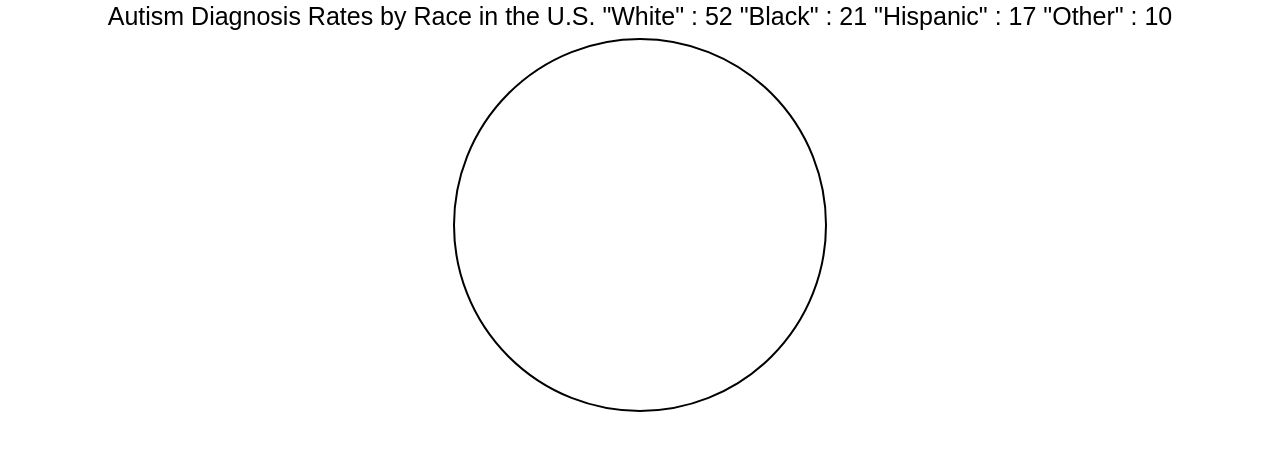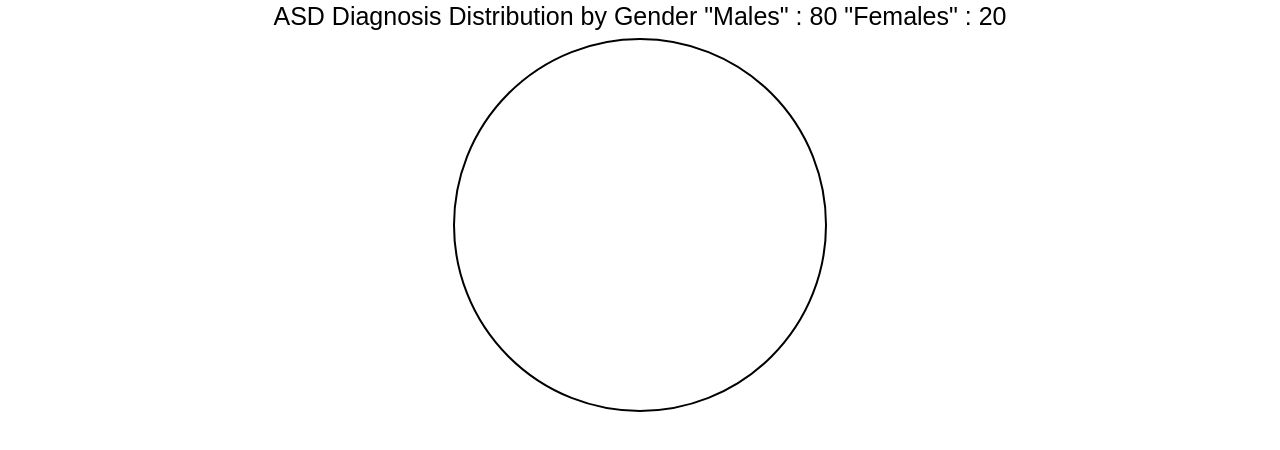Introduction
Autism spectrum disorder (ASD) affects individuals and families in unique ways, presenting a wide array of challenges. Understanding the prevalence of autism is crucial for ensuring that resources and support are aligned with the needs of the community.
Recent statistics reveal a startling rise in ASD prevalence, with 1 in every 36 children now being diagnosed, a significant increase from the 2004 rate of 1 in 125. Early identification plays a pivotal role in a child's development, as those diagnosed by age 4 are fifty times more likely to receive essential services.
However, disparities persist, with certain racial and ethnic groups facing barriers to diagnosis and intervention. Boys are also diagnosed with autism more frequently than girls, but emerging research suggests that girls may exhibit different characteristics, potentially leading to underdiagnosis. In this article, we will explore the global prevalence of autism, the specific landscape in the United States, and the risk factors associated with this neurodevelopmental condition. By gaining a deeper understanding of autism prevalence, we can work towards creating a more inclusive world for all individuals on the spectrum.
Understanding Autism Prevalence
Autism spectrum disorder (ASD) is a neurodevelopmental condition that presents a wide array of challenges and characteristics, impacting individuals and families uniquely. Understanding autism's prevalence is fundamental to ensuring that resources, support, and interventions are appropriately aligned with the needs of the community.
Recent statistics from the National Center for Health Statistics reveal a startling rise in ASD prevalence to 1 in every 36 children, a significant increase from the 2004 rate of 1 in 125. This upsurge underscores the critical nature of early identification, which can be pivotal in a child's development.
In fact, children diagnosed by age 4 are fifty times more likely to receive essential services. However, disparities persist, with White and Black children more frequently identified with autism compared to Hispanic children, who may face barriers such as stigma, healthcare access issues, and language differences, delaying diagnosis and intervention.
Boys are identified with autism approximately four times more often than girls, though emerging research suggests that girls may exhibit different autism characteristics, potentially leading to underdiagnosis. In Australia, the National Disability Insurance Scheme (NDIS) plays a vital role in supporting children with autism, offering personalized plans and funding for services like early intervention programs.
These programs target key development areas, including communication, social skills, and behavior management, enhancing a child's potential. The importance of education and inclusion cannot be overstated, with legal frameworks such as the Disability Discrimination Act (DDA) 1992 and Disability Standards for Education (DSE) 2005 ensuring the rights of individuals with autism in educational settings. The global conversation around autism is evolving, with recent research from University College London suggesting that the actual number of autistic individuals in England may far exceed current government estimates, particularly among adults over 50 who grew up when autism awareness and diagnostic efficacy were limited. This revelation calls for a reevaluation of support systems and diagnostic processes to better serve the autistic population. As we strive to foster a society that embraces neurodiversity, the contributions of advocacy groups, governmental initiatives, and ongoing research are paramount in promoting autism awareness and acceptance, ultimately leading to a more inclusive world for all.
Global Prevalence of Autism
Autism spectrum disorder (ASD) is a condition that knows no borders, impacting individuals and families across the globe. Current research underscores the variability in autism prevalence, with an estimated 1 in 160 children affected worldwide.
This statistic underlines the urgency for comprehensive support and awareness on an international level. In Africa, studies such as those published in The Annals of Medicine & Surgery and The Journal of Pediatrics, Perinatology and Child Health, reveal significant barriers to diagnosis and treatment due to scarce resources and a shortage of trained professionals.
This deficit in healthcare provision means many African children with autism miss out on early diagnosis, which is crucial as early interventions can significantly alter outcomes. Furthermore, cultural stigmas, such as those faced by Mary's son in the case of Gachoki's relatives attributing autism to witchcraft, add to the complexity of securing appropriate care.
Globally, there has been a notable rise in autism diagnoses, particularly among adults under 30, challenging the earlier perceptions of autism and reflecting changes in diagnostic criteria rather than an increase in the condition itself. The misconception that autism could be caused by vaccines or parenting practices has been dispelled, as evidence points to genetic factors and the possibility of inherited irregular genetic codes.
Brain scans have also revealed differences in brain structure between individuals with ASD and neurotypical development, suggesting a neurological underpinning. Recent statistics show that children diagnosed with autism by age 4 are fifty times more likely to receive services, highlighting the impact of early identification. However, disparities persist, with children of color often receiving diagnoses later than white children, which can be attributed to factors like stigma and barriers to healthcare access. Boys are approximately 4 times more likely to be diagnosed with autism than girls, although emerging research suggests that girls may exhibit different autism characteristics, potentially leading to underdiagnosis. The evolving understanding of autism, fueled by advancements in research, continues to shape the landscape of support and intervention for those affected by ASD.
Autism Prevalence in the United States
The landscape of autism diagnosis in the U.S. is rapidly evolving. Recent data from the Centers for Disease Control and Prevention (CDC) puts the prevalence at 1 in 36 children, a stark increase from the 1 in 125 rate recorded in 2004.
This indicates not just heightened awareness but also an expansion in the understanding of autism's diverse manifestations. The 2023 report from the CDC reveals a nuanced picture of diagnosis across demographics: while more White and Black children are being identified with autism, Hispanic children, and children of color face significant barriers to early diagnosis, such as stigma, healthcare access, and language differences.
Boys are diagnosed approximately four times more than girls, yet emerging research suggests that girls may express autism differently, potentially leading to underdiagnosis. The education system reflects these trends, with the U.S. Department of Education reporting a more than twofold increase in the percentage of students with autism in special education since 2008-2009.
Now nearly 13% of these students are identified as on the spectrum, with significant variances between states. The rising figures bring to light the critical need for tailored services and interventions, as early diagnosis by age 4 can result in children being fifty times more likely to receive necessary support. The shifting statistics also challenge previous notions of prevalence among racial groups, with recent data showing higher rates of autism in Black children compared to White children. These findings compel a reevaluation of strategies to ensure equitable access to diagnostic and support services for all communities.

Breaking Down Autism Prevalence Stats
Autism Spectrum Disorder (ASD) transcends age, gender, and ethnicity, affecting individuals diversely across the spectrum. In Australia, studies underscore that males are four times as likely to be diagnosed with autism as females.
This disparity may be influenced by the different ways autism presents in girls, potentially leading to underdiagnosis. Early detection remains a cornerstone in supporting children with ASD and their families, with diagnosis possible at any age.
Particularly, children identified by age 4 are fifty times more likely to access services. Yet, barriers such as stigma, socioeconomic factors, and language hurdles can delay diagnosis for Hispanic children and children of color, who may receive their diagnosis later than White children.
The National Disability Insurance Scheme (NDIS) in Australia plays a pivotal role in offering early intervention, focusing on areas including communication, social skills, and behavior management. Addressing the unique needs of those with autism through understanding and acceptance is crucial for building an inclusive society. Recent research suggests that the prevalence of autism is on the rise, with a current estimate of 1 in 36, a significant increase from the 2004 rate of 1 in 125. This amplifies the call for policymakers, healthcare professionals, and educators to collaboratively enhance autism awareness, training, and support.

Understanding Risk Factors
As the prevalence of autism spectrum disorder (ASD) escalates, with CDC data revealing a rise from 1 in 68 children in 2010 to 1 in 36 in 2020, pinpointing the underpinnings of this condition is more pressing than ever. Studies underscore that ASD is a multifactorial disease, with recent research attributing 35% to 40% of autism cases to genetic factors, while environmental influences such as prenatal exposure to air pollution, based on residential histories, are also significant contributors.
The remaining 60% to 65% may stem from a combination of prenatal, perinatal, and postnatal factors. A comprehensive study involving over 2.5 million births in Sweden and Finland revealed that the risk of ASD in offspring is heightened when both parents have a psychiatric disorder, suggesting a complex interplay between genetic predisposition and environmental factors.
The study's findings, which align with the global autism prevalence of 0.62%, offer a nuanced understanding of the risk structure for ASD. Dr. Sergiu Pasca of Stanford University highlights the challenge of translating genetic discoveries into a clear understanding of how disruptions in these genes cause conditions like ASD. Meanwhile, researchers at the National Institutes of Health consortium, PsychENCODE, led by Dr. Daniel Geschwind, are mapping gene regulation in the brain to bridge the gap between genetic risks and molecular mechanisms. These insights are vital in forming new detection and management strategies, as the majority of metabolic changes driving autism's development occur between birth and later childhood, as revealed by researchers at UC San Diego School of Medicine.
Conclusion
Understanding the prevalence of autism spectrum disorder (ASD) is crucial for providing appropriate resources and support. Recent statistics reveal a significant increase in ASD prevalence, with 1 in every 36 children now being diagnosed, compared to 1 in 125 in 2004.
Early identification plays a pivotal role, as those diagnosed by age 4 are fifty times more likely to receive essential services. Disparities persist among racial and ethnic groups, with boys being diagnosed more frequently than girls.
Globally, the prevalence of autism varies, with an estimated 1 in 160 children affected worldwide. Limited resources and cultural stigmas contribute to significant barriers to diagnosis and treatment in Africa.
Genetic factors and neurological differences play a role in the evolving understanding of autism. In the United States, the prevalence has increased to 1 in 36 children.
Disparities exist among different racial and ethnic groups, emphasizing the need for equitable access to diagnostic and support services. The risk factors associated with ASD are multifactorial, including genetic factors and environmental influences such as prenatal exposure to air pollution. Ongoing research aims to improve detection and management strategies by bridging the gap between genetic risks and molecular mechanisms. Fostering autism awareness, acceptance, and inclusion is essential on a global scale. By addressing disparities and understanding unique needs, we can work towards creating a more inclusive world for all individuals on the spectrum.




